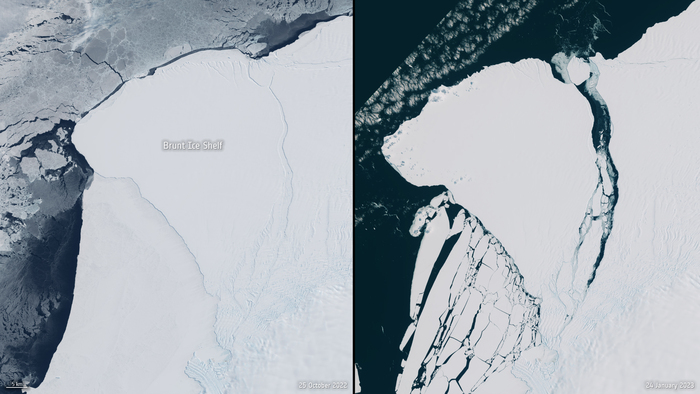New images of the iceberg that detached from the Brunt ice shelf in Antarctica on 22 January come from the eyes of the European Copernicus Sentinel satellites, the Earth observation program managed by the European Commission and the European Space Agency (ESA): the photos taken show the extension of the new iceberg, 1,550 square kilometers large, five times the island of Malta, and about 150 meters thick.
The huge piece of ice broke free after the fracture known as Chasm-1 extended fully northward: the fracture had been under control since early 2012, when it began to show signs of activity after being dormant for decades, and it was only a matter of time before he met the Halloween one (so called because it was first seen on Halloween of 2016).
The new iceberg will probably be given the name A-81, while the smaller piece to the north will be identified as A-81A or A-82.
“After several years of monitoring, the long-awaited separation of iceberg A81 has finally taken place,” comments ESA's Mark Drinkwater: “It was perhaps the most detailed and longest-lasting monitoring ever for the calving of an iceberg from an Antarctic ice shelf.
The combination of the images taken by Sentinel-2 during the summer – adds Drinkwater – with those captured by the radar of Sentinel-1 in the winter and in the rest of the year made it possible to follow the entire process in detail”.
The calving of the iceberg could now influence the behavior of what remains of the Brunt ice shelf and of the other cracks present, leading to an acceleration of the ice flow towards the sea: "We will continue to use the capabilities of the Copernicus satellites - concludes Mark Drinkwater – to closely monitor the behavior and stability of the platform”.







/cloudfront-eu-central-1.images.arcpublishing.com/prisa/Q2GFUQLBLVDFDE4G6U6GH2UFJE.png)






